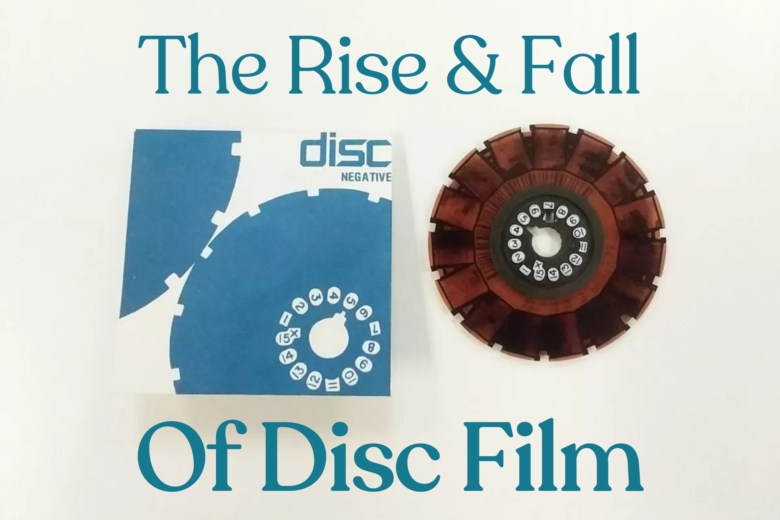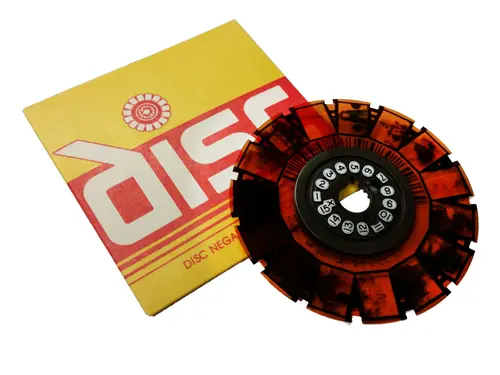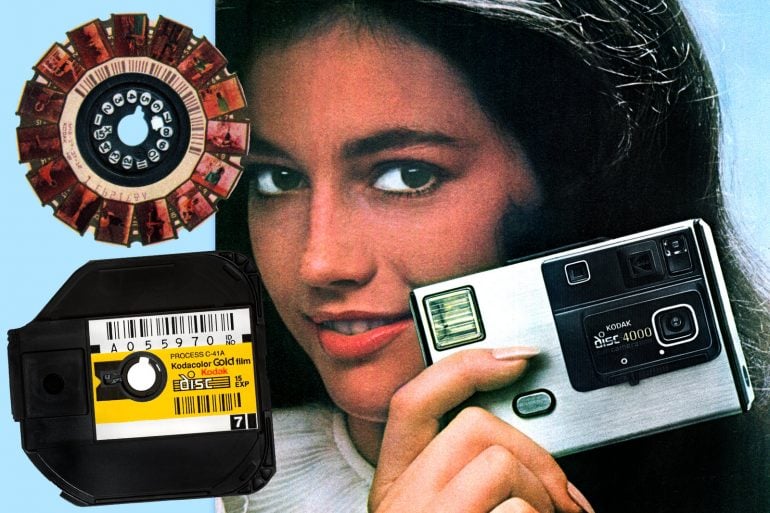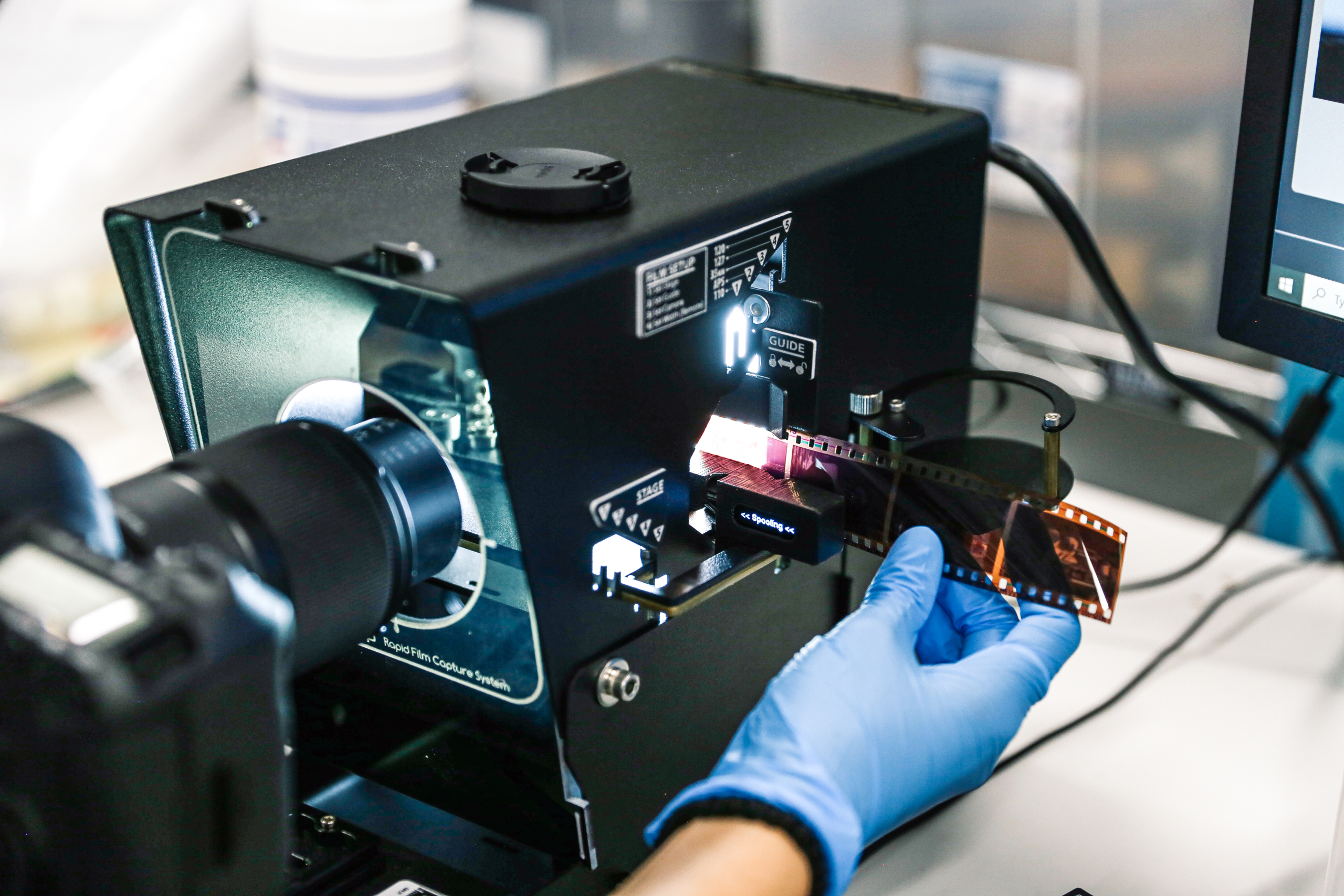Over the years, photography has seen a lot of formats come and go. Some have stuck around, while some were just passing fads… and disc film can firmly be placed in the latter.
In the early 1980s, Kodak tried to revolutionize family photography with a sleek new idea: disc film. But Kodak’s compact disc film cameras almost looked like gadgets from a sci-fi movie, not something you’d take out at a family barbecue, and the product ultimately flopped. Let’s explore why…
WHAT IS DISC FILM??
Introduced in 1982, disc film came in small, flat, circular cartridges, quite a departure from traditional rolls of film. The cartridges were designed to load directly into specially made disc cameras. This was part of its appeal: no threading film leaders or light leaks.
Disc film was for families and casual photographers who valued convenience over technical perfection. With slim cameras and an easy-to-use experience, Kodak’s disc film was pitched as ideal for on-the-go photography.
HOW DID DISC FILM WORK?
Instead of a roll, Kodak disc film came pre-loaded in a flat, plastic cartridge shaped like a disc (hence the name). Inside, a circular strip of film contained 15 exposures, each one positioned around the edge.
When you pressed the shutter, the camera would rotate the disc to the next frame, exposing a tiny 8×10mm negative. Because the film was sealed in its cartridge, you never had to touch or thread it. Instead, you simply popped the disc into the camera, took your shots, and dropped the whole thing off at the lab when you were done.
Disc film promised a simpler, more futuristic way to take photos: compact cameras that were easy to carry around, with stress-free film loading and no worry about mishandling negatives.
WHY DIDN’T DISC FILM LAST?
For all the hype, Kodak disc film never quite lived up to its big promises.
The biggest issue was image quality. Each negative was only about 8×10mm, much smaller than standard 35mm film. That meant prints often looked grainy or soft, especially if you tried to enlarge them. If you wanted crisp photos to have as a long-lasting memento, you’d be left disappointed.
Disc film photos also faced stiff competition. By the mid-1980s, 35mm point-and-shoot cameras were becoming more affordable and far more reliable in terms of quality. At the same time, instant cameras like Polaroid offered their own kind of convenience.
Plus, disc film developing required special equipment, so fewer labs handled it, and prices were often higher than standard film processing. For a product aimed at everyday families, the price was a hard pill to swallow.
By the early 1990s, disc film had largely disappeared from store shelves. Kodak discontinued the format, and it was gone just as quickly as it had come around.
IS DISC FILM STILL USED TODAY?
While you won’t see disc cameras on store shelves anymore, the format still has some nostalgic appeal. Just like Polaroids, VHS tapes, or vinyl records, some creative photographers love to experiment with old film formats for their unique look and retro charm.
That said, shooting with disc film today isn’t as easy as listening to a vinyl record or even buying a Polaroid camera. The film has been out of production for decades, so any cartridges left are long expired. Disc film developing is also tricky, as very few labs still have the equipment to handle it, and results can be unpredictable. For most people, disc film now serves more as a collector’s item than a practical format.
HOW TO SCAN DISC FILM NEGATIVES
Do you have a stack of old disc film photo cartridges lying around? The best way to preserve those memories is by digitizing the negatives, but because disc film was such a unique format, scanning it properly can be tricky.
Disc film is fragile, and many cartridges are decades old. Cracked plastic or dust inside can make the negatives even more delicate, so be careful when handling them.
Here’s what the Kodak disc film scanning process typically involves:
1. Extracting and cleaning the negatives: Each of the 15 tiny exposures needs to be cleaned and aligned before scanning.
2. High-resolution scanning: Since the negatives are very small, high-quality scanning is essential to get the most detail possible.
3. Digital correction and restoration: Once scanned, photos often need adjustments to bring old, grainy images back to life.
4. Archiving and sharing: Now your digitized files can be stored safely, printed, or shared with family.
Because of these challenges, it’s best to trust professional digitizing services for scanning disc film negatives. They have the right tools and expertise to handle your film safely, producing the highest quality scans without risking damage to your negatives.
WE SCAN AND DIGITIZE DISC FILM
At EverPresent, we specialize in digitizing old media, using professional equipment to safeguard your treasured possessions. To our knowledge, we’re one of the only scanning service that offers scanning of disc negative film.
Our team carefully handles each cartridge and delivers digital files you can safely store, share, and enjoy for years to come.
If you’ve got disc film tucked away in a box or drawer, don’t let those memories fade. Send them to EverPresent and bring your photos back to life in digital form.




